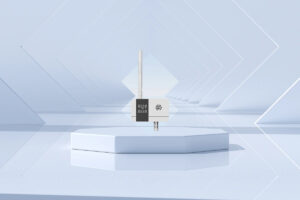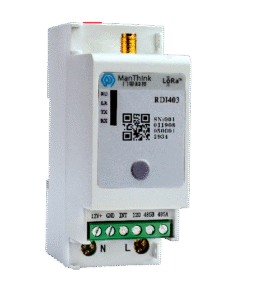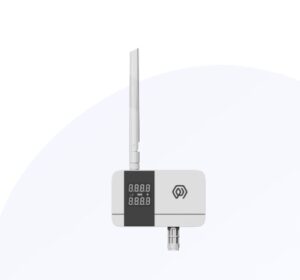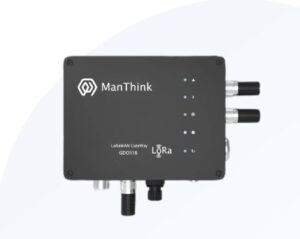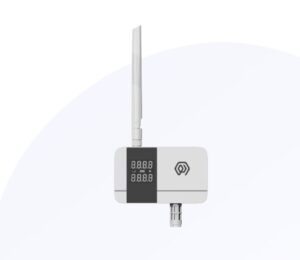NEWS
Explore Smart Applications and Deployment Stories Powered
by LoRaWAN Technology?
How LoRaWAN Temperature Sensors from China Handle Extreme Heat Waves
In recent years, extreme heat waves have become more frequent, intense, and unpredictable across the many regions of the world....
Read MoreHow to Switch from RS485 to LoRaWAN in China Without Headaches?
In China’s burgeoning landscape of industrial automation, smart metering, environmental sensing, and IoT deployment, engineers and integrators often face the...
Read MoreWhy Did Internet Giants Fail in the IoT Platform Market?
The Internet of Things (IoT) was once hailed as the key to unlocking a smarter future. Tech giants such as...
Read MoreShould You Choose an Indoor or Outdoor LoRaWAN Gateway? Domestic LoRaWAN NS + IoT Platform ThinkLink Now Free!
1. Protection Level: Indoor vs. Outdoor Suitability For outdoor deployment, outdoor gateways are a must; for protected areas, indoor gateways...
Read MoreWhy is NS the Core of a LoRaWAN System? Manthink’s Domestic LoRaWAN NS + IoT Platform ThinkLink Now Open for Free
1. The “Central Brain” in the Three-Layer LoRaWAN Architecture A LoRaWAN network consists of three core components: Among them, the...
Read MoreIoT platform SMEs LoRaWAN Opportunities and Growth
In recent years, internet giants have scaled back their IoT platform presence. However, the opposite trend is emerging: IoT platform...
Read MoreA Beginner’s Guide to Implementing LoRaWAN Pulse Counters in Your Projects
The Internet of Things (IoT) is changing the way industries, businesses, and even homes manage data and resources. One of...
Read MoreChoosing the Right LoRaWAN Gateway: Key Features to Consider
The rapid growth of the Internet of Things (IoT) has created a strong demand for reliable connectivity solutions. Among these,...
Read MoreThe Power of Connectivity: Understanding LoRaWAN Sensors and Their Impact
In today’s digital era, the ability to connect devices seamlessly and reliably is shaping the way industries, cities, and even...
Read MoreHow to Plan and Deploy a LoRaWAN Network: A Practical Guide from Design to Implementation
LoRaWAN, as a long-range and low-power wireless communication technology, has become a preferred choice for IoT applications such as smart...
Read MoreHow to Migrate from a Gateway-Embedded NS to a Standard LoRaWAN Architecture
In many early-stage or simplified LoRaWAN deployments, some gateways integrate the Network Server (NS) directly inside the device. While this...
Read MoreLoRa Base Station vs. LoRa Gateway: Different Names, Same Role
Abstract:This article explores the similarities and differences between LoRa base stations and LoRaWAN gateways, highlighting their core roles in the...
Read MoreComprehensive Guide to LoRaWAN Network Topology: Architecture, Principles, and Applications
AbstractLoRaWAN (Long Range Wide Area Network) is a low-power wide-area network protocol designed for IoT applications. With its long-range capability,...
Read MoreThe 4 Key Parameters of the LoRa Physical Layer Explained
LoRa (Long Range) is a low-power wide-area network (LPWAN) communication technology based on Chirp Spread Spectrum (CSS) modulation. While its...
Read MoreWhat is Home Assistant? What’s the Relationship with LoRaWAN?
1. What is Home Assistant? Home Assistant (HA) is an open-source smart home platform developed in Python. Since its launch...
Read MoreHow to Integrate LoRaWAN Devices with BACnet Systems: A Guide for Smart Buildings
In the world of IoT, there are two things that always matter: how to connect devices, and how to manage...
Read MoreHow LoRaWAN Connects with BACnet: A Practical Guide for Smart Building Integration
In modern smart buildings, integrating outdoor sensors or remote IoT devices into centralized building control systems is a common challenge....
Read MoreHow LoRa Devices Achieve Low Power and Local Control: A Deep Dive into SW Mode
Summary:Balancing low power consumption and operational flexibility is a key challenge in IoT terminal design. The Sleep-Wakeup (SW) mode offers...
Read MoreWhy Are Battery-Powered LoRa DTUs So Rare?
LoRa DTUs (Data Transfer Units) play a crucial role in low-power wide-area network (LPWAN) deployments. They are widely used for...
Read MoreHidden Risks of DTU Polling Communication: Power, Capacity, and Efficiency Explained
In IoT applications, a DTU (Data Transfer Unit) serves as the critical link that gathers data from meters or sensors...
Read MoreUnderstanding LoRaWAN Join Methods: Striking a Balance Between Security and Simplicity
LoRaWAN devices can join the network via ABP or OTAA. This article provides a technical breakdown of each approach, highlighting...
Read MoreWhy are SF5 and SF6 not supported in the LoRaWAN standard?
Discover why SF5 and SF6 are excluded in LoRaWAN standard. Learn about technical reasons, hardware constraints, and their potential in...
Read MoreKey Capabilities You Need When Designing Reliable LoRaWAN Devices
While LoRaWAN is widely embraced for its long-range and low-power communication, developing a field-ready device requires far more than simply...
Read MoreWhy the COV Algorithm Is Indispensable for Low-Power LoRaWAN IoT — A Deep Dive into EdgeBus Architecture
The Change of Value (COV) algorithm is becoming a core technology in low-power IoT, particularly in LoRaWAN deployments. By uploading...
Read MoreMulti-bin Technology: The Key to Efficient Remote Firmware Upgrades for LoRa Projects
In the IoT (Internet of Things) field, remote maintenance and firmware upgrades (OTA updates) are critical to ensure long-term system...
Read MoreWhat Are the Basic Functional Requirements for LoRa-Based Device Development?
With the continuous development of Internet of Things (IoT) technology, LoRaWAN has been widely applied in smart cities, industrial monitoring,...
Read MoreWhat is a Throttling Algorithm? Understanding EdgeBus’s COV Method and Its Importance in Low-Power IoT
In low-power wide-area network (LPWAN) systems, LoRaWAN has become a widely adopted communication technology due to its long-range transmission, low...
Read MoreWhat is Multi-Bin? What Value Does It Bring to LoRa Projects?
In IoT (Internet of Things) projects, firmware upgrades (OTA updates) are a crucial part of maintaining and optimizing device functionality....
Read MoreHow Many Devices Can a LoRa Gateway Support?
One of the most frequently asked questions during LoRaWAN network deployment is: “How many devices can a LoRa gateway support?”...
Read MoreDoes a LoRaWAN Gateway Support Connection to a Private Server?
From a technical perspective, a LoRaWAN gateway can indeed be connected to a private server. Gateways function as data-forwarding devices...
Read MoreCan LoRaWAN Gateways Support Historical Data Recall?
In the LoRaWAN network architecture, gateways typically act as “transparent forwarders.” Their main function is to receive data packets from...
Read MoreWhy Do LoRaWAN Outdoor Gateways Always Choose N-Type Antenna Connectors?
When deploying a LoRaWAN network, the selection of antennas is a key factor affecting communication performance and device stability. In...
Read MoreWhy do most outdoor LoRaWAN gateways not have indicator lights?
In deploying LoRaWAN networks, many users notice an interesting phenomenon: most outdoor LoRaWAN gateways do not come equipped with indicator...
Read MoreWhat is the Difference Between SX1301 and SX1302 in LoRaWAN Gateways?
With the widespread adoption of LoRaWAN technology in the Internet of Things (IoT), the selection of gateway chips has become...
Read MoreWhat Are the Application Scenarios for a Gateway Supporting 16 Frequency Points and 32 Channels?
LoRaWAN technology has become a key communication solution in the LPWAN (Low-Power Wide-Area Network) space, thanks to its characteristics of...
Read MoreLoRa vs Other Wireless Communication Technologies
🔗 Bluetooth: The People’s Choice for Short-Range, Device-to-Device Communication Commonly used for wearable devices, smart locks, health monitoring devices, and...
Read MoreThe Power of Standardization: Why the LoRaWAN Hygrometer SE72 Can Seamlessly Connect to TTN, ChirpStack, and Other Platforms
n today’s rapidly evolving Internet of Things (IoT) landscape, achieving interoperability between devices, ensuring data security, minimizing power consumption, and...
Read MoreWhat’s the Relationship Between LoRaWAN Standards and Gateways?
In a LoRaWAN system, the gateway serves as a bridge between end devices and the network server. This article explains...
Read MoreWhat Is a LoRa Gateway?
A LoRa gateway is a core component in a LoRa network, primarily responsible for transmitting information between terminal devices and...
Read MoreWhat Are the Issues with a Raspberry Pi-Based LoRaWAN Gateway?
Although the Raspberry Pi is widely used in prototyping and educational applications, when it comes to deploying a LoRaWAN gateway...
Read MoreIntroduction to LoRa Gateway Vendors and Product Features
As LoRa technology continues to gain popularity in the IoT field, a number of gateway vendors have emerged globally, each...
Read MoreWhy IoT Projects Need FUOTA
n the world of IoT (Internet of Things), especially in large-scale LoRaWAN-based deployments, the ability to remotely update firmware is...
Read MoreWhy Manthink’s LoRaWAN Gateways Outperform the Competition: A Deep Dive into Hardware and Architecture
As LoRaWAN continues to gain traction in the global IoT market, Manthink has emerged as a trusted provider of high-performance...
Read MoreWhat is LoRaWAN? Why is a Network Server (NS) Essential?
As IoT deployment accelerates across industries, LoRaWAN has become one of the most important LPWAN standards. However, many engineers underestimate...
Read More